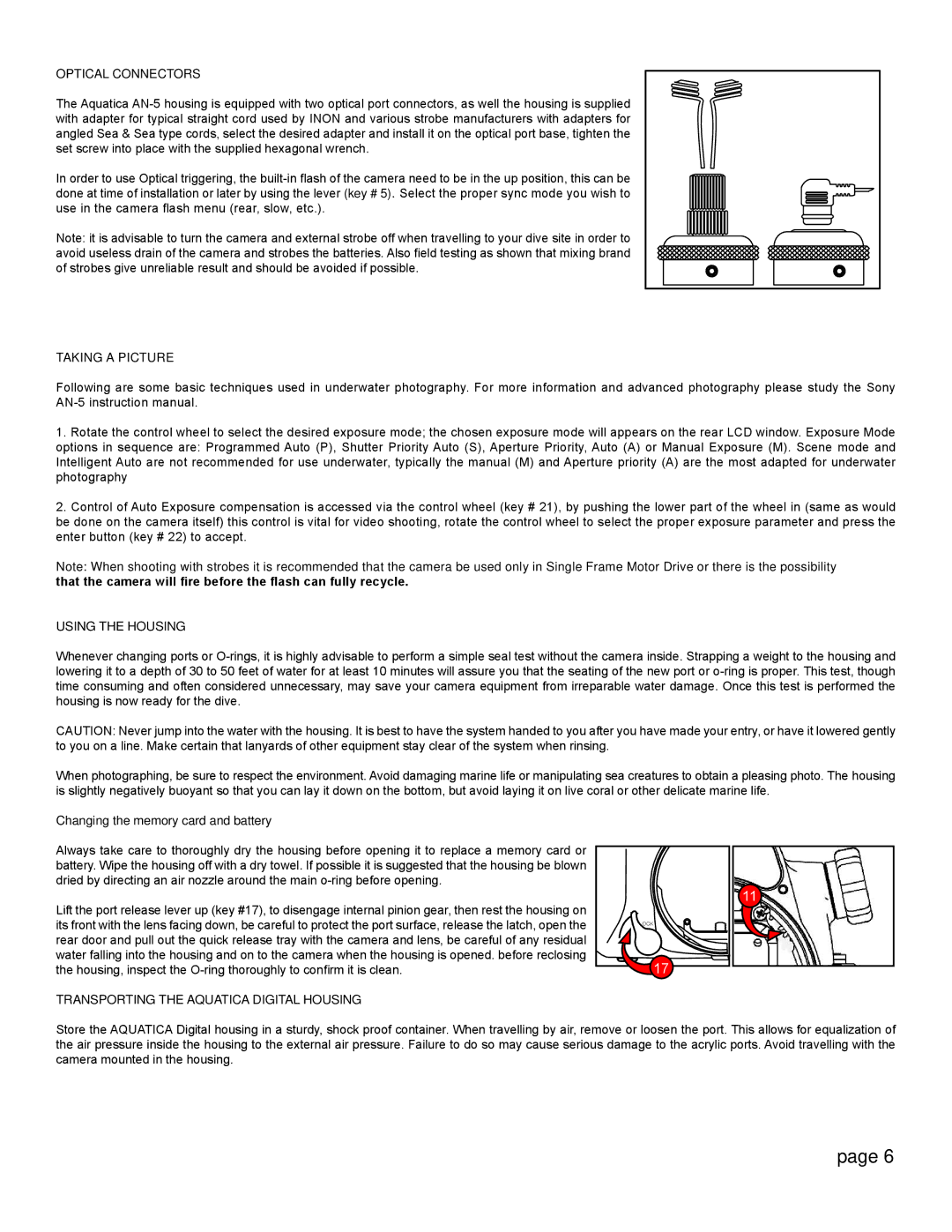
OPTICAL CONNECTORS
The Aquatica
In order to use Optical triggering, the
use in the camera flash menu (rear, slow, etc.).
Note: it is advisable to turn the camera and external strobe off when travelling to your dive site in order to avoid useless drain of the camera and strobes the batteries. Also field testing as shown that mixing brand of strobes give unreliable result and should be avoided if possible.
TAKING A PICTURE
Following are some basic techniques used in underwater photography. For more information and advanced photography please study the Sony
1.Rotate the control wheel to select the desired exposure mode; the chosen exposure mode will appears on the rear LCD window. Exposure Mode options in sequence are: Programmed Auto (P), Shutter Priority Auto (S), Aperture Priority, Auto (A) or Manual Exposure (M). Scene mode and
Intelligent Auto are not recommended for use underwater, typically the manual (M) and Aperture priority (A) are the most adapted for underwater photography
2.Control of Auto Exposure compensation is accessed via the control wheel (key # 21), by pushing the lower part of the wheel in (same as would be done on the camera itself) this control is vital for video shooting, rotate the control wheel to select the proper exposure parameter and press the enter button (key # 22) to accept.
Note: When shooting with strobes it is recommended that the camera be used only in Single Frame Motor Drive or there is the possibility that the camera will fire before the flash can fully recycle.
USING THE HOUSING
Whenever changing ports or
CAUTION: Never jump into the water with the housing. It is best to have the system handed to you after you have made your entry, or have it lowered gently to you on a line. Make certain that lanyards of other equipment stay clear of the system when rinsing.
When photographing, be sure to respect the environment. Avoid damaging marine life or manipulating sea creatures to obtain a pleasing photo. The housing is slightly negatively buoyant so that you can lay it down on the bottom, but avoid laying it on live coral or other delicate marine life.
Changing the memory card and battery
Always take care to thoroughly dry the housing before opening it to replace a memory card or battery. Wipe the housing off with a dry towel. If possible it is suggested that the housing be blown dried by directing an air nozzle around the main
Lift the port release lever up (key #17), to disengage internal pinion gear, then rest the housing on its front with the lens facing down, be careful to protect the port surface, release the latch, open the rear door and pull out the quick release tray with the camera and lens, be careful of any residual water falling into the housing and on to the camera when the housing is opened. before reclosing the housing, inspect the
UNLOCK |
17 |
11
TRANSPORTING THE AQUATICA DIGITAL HOUSING
Store the AQUATICA Digital housing in a sturdy, shock proof container. When travelling by air, remove or loosen the port. This allows for equalization of the air pressure inside the housing to the external air pressure. Failure to do so may cause serious damage to the acrylic ports. Avoid travelling with the camera mounted in the housing.
page 6
